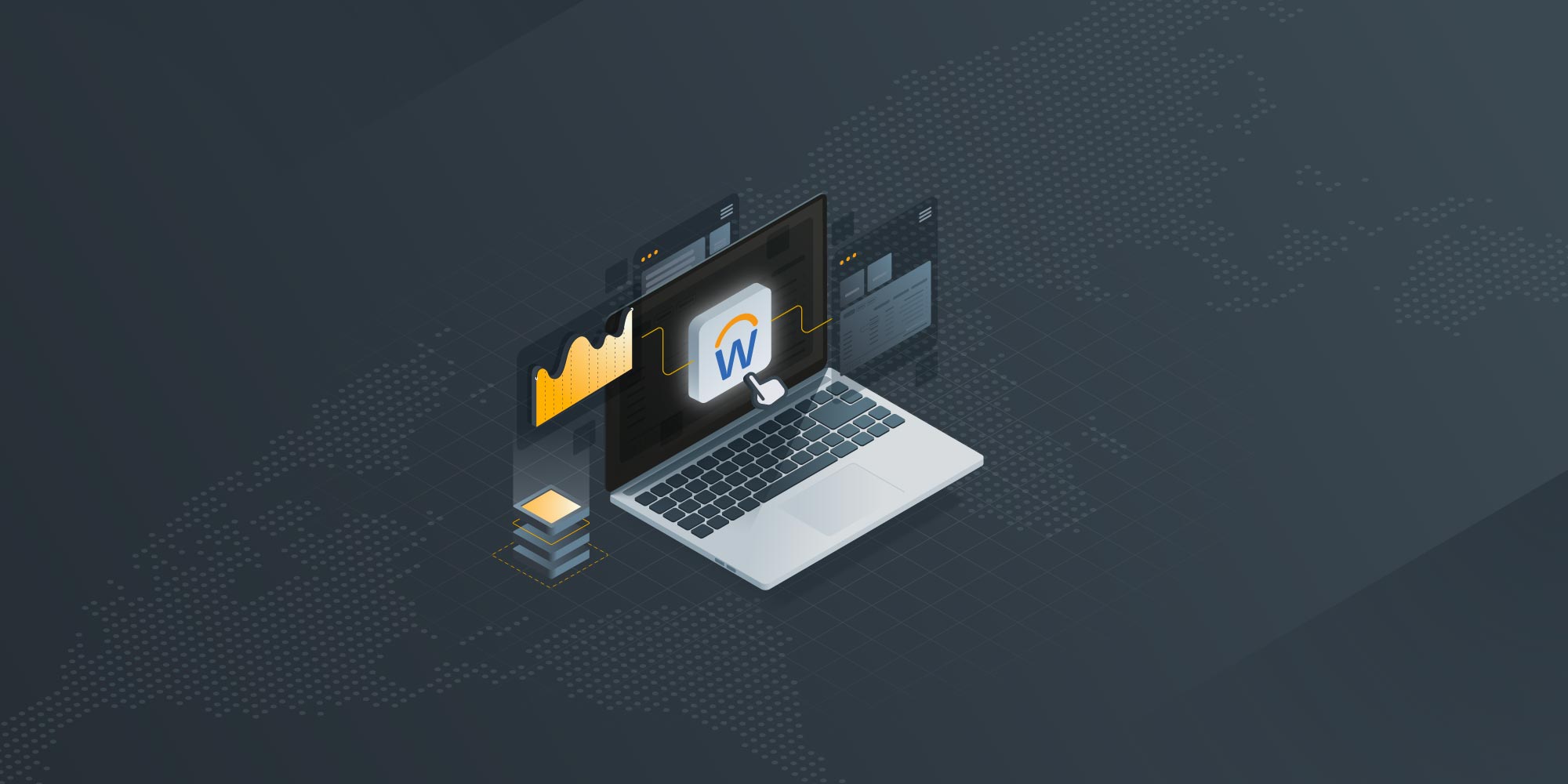Benefits and best practices of integrated inventory management
 GroWrk Team
GroWrk Team
Inventory management isn’t just about storing products—it’s the backbone of every efficient supply chain. Yet surprisingly, accuracy in U.S. retail inventory operations hovers around 63%, leaving 37% vulnerable to errors that result in stockouts, overstocks, and wasted resources. That’s money tied up, customers disappointed, and operations slowed down.
Integrated inventory management solves this by centralizing data, automating workflows, and ensuring every team, from warehouse ops to finance, works from the same source of truth. It’s not just about counting stock. It’s about staying competitive, meeting demand, and reducing waste simultaneously.
In this guide, we’ll break down how integrated inventory systems work, what challenges they solve, and what it takes to implement them effectively.
Key takeaways
-
It’s easier and more transparent to make decisions and please customers with an integrated inventory management system in place.
-
Automated systems and data techniques, such as demand forecasting and Just-In-Time (JIT), often save time and money.
-
Regular monitoring and analysis of key performance indicators (KPIs) help check inventory management and improve it over time.
Understanding an integrated inventory management system

Integrated inventory management consolidates all inventory-related processes—procurement, storage, tracking, and fulfillment—into a single, unified system. Instead of siloed tools or manual spreadsheets, this IT strategy connects every part of the supply chain, enabling businesses to operate with real-time visibility and better control.
By combining sales data, stock levels, supplier activity, and warehouse information in one place, teams can:
-
Eliminate duplicate data entry and reduce errors
-
Make more informed decisions about restocking, transfers, and demand
-
Improve responsiveness across locations and departments
Ultimately, integrated systems shift inventory management from a reactive to a proactive approach, providing a clear picture of what’s in stock, where it’s located, and what needs to happen next.
Key components of an integrated inventory system
A well-integrated inventory system isn’t just about keeping track of stock—it’s a combination of tools, processes, and data streams that connect the entire supply chain. Key components include:
-
Centralized data architecture that collects and unifies stock, order, and supplier data across warehouses, stores, and channels.
-
Inventory optimization tools that enable stock level forecasting, reorder point calculation, and demand planning.
-
Automation protocols that eliminate manual updates for inventory counts, purchase orders, and shipping status.
-
Multi-location support for tracking inventory across regions, fulfillment centers, and dropship suppliers in one interface.
-
Integrations with external systems like ERP, CRM, and accounting software to ensure consistent data across departments.
-
Reporting and analytics dashboards that turn raw data into actionable insights for inventory turnover, aging, and product movement.
These components work together to improve accuracy, efficiency, and visibility, laying the groundwork for a streamlined inventory operation.
How do integrated inventory systems work?
Integrated inventory systems operate by synchronizing real-time data across multiple touchpoints in the supply chain. Here’s how the flow typically works:
-
Inventory is scanned and logged at intake, updating all connected platforms simultaneously with current stock levels.
-
Sales or returns from any channel automatically update inventory counts across the system, preventing overcommitment or double-selling.
-
Orders are dynamically routed to the optimal warehouse or vendor based on location, stock availability, and shipping constraints.
-
Threshold-based triggers initiate purchase orders or low-stock alerts based on predefined rules, keeping replenishment proactive.
-
Every transaction is time-stamped and auditable, supporting compliance, traceability, and performance monitoring.
-
Teams access a shared real-time dashboard, enabling IT, ops, and finance to align without relying on manual handovers or outdated spreadsheets.
The result: faster fulfillment, smarter purchasing, and fewer surprises across your inventory lifecycle.
Benefits of integrated inventory management
.png?width=600&height=300&name=integrated%20inventory%20management%20(1).png)
Implementing integrated inventory systems can lead to significant operational improvements and cost savings across various industries. Businesses that adopt these systems experience more efficiency, lower costs, and happier customers.
Enhanced operational efficiency
Managing inventory manually slows everything down. Integrated systems automate repetitive tasks, freeing teams to focus on high-impact work.
-
Automation reduces manual data entry, saving time and minimizing errors.
-
Real-time updates ensure order fulfillment moves quickly and accurately.
-
RFID and other modern tools track stock instantly, even without line of sight.
-
Seamless interdepartmental coordination helps teams respond faster and reduce friction across the supply chain.
Improved financial reporting
Inventory data isn’t just operational—it’s financial. Accurate numbers lead to clearer insights and better decisions.
-
Transparent inventory data supports more innovative budgeting, forecasting, and pricing.
-
Knowing where and how capital is tied up helps optimize cash flow.
-
Integrated systems make it easier to assign actual costs to purchasing, holding, and handling.
-
Reduced excess inventory leads to higher inventory turnover and fewer financial surprises.
Better customer satisfaction
Customers expect fast, reliable service. Integrated inventory makes that happen by ensuring the right products are in the right place, every time.
-
Real-time stock levels allow businesses to meet demand without delay.
-
Faster fulfillment creates better delivery experiences and builds trust.
-
Accurate availability information helps reduce cancellations and backorders.
-
Smooth order management means customers get what they want, when they want it.
Overcoming common inventory management challenges
.png?width=600&height=300&name=integrated%20inventory%20management%20(2).png)
Even with modern tools, inventory management remains a challenge for growing businesses. Issues such as overstocking, inconsistent visibility, and fulfillment delays can result in lost revenue and unhappy customers. Here's how integrated systems help solve those challenges before they snowball.
Reducing excess inventory and stockouts
Balancing inventory is tough. Carrying too much can be a waste of money on storage. Carry too little, and you miss out on sales. Integrated systems bring control back to the middle.
-
Overstocking ties up capital and increases holding costs, while stockouts damage customer trust.
-
Integrated systems track sales trends in real time and help maintain optimal inventory levels.
-
Low-stock alerts and automated reorder points prevent shortages before they happen.
-
Visibility across multiple locations allows for strategic redistribution instead of panic restocking.
Enhancing supply chain visibility
Many businesses lose efficiency simply because they can't see what's going on. Integrated tools connect the dots and bring clarity to every step of the inventory journey.
-
Lack of visibility leads to reactive decision-making and inefficiencies in procurement and delivery.
-
Centralized dashboards show where stock is, how it’s moving, and what’s needed across every channel.
-
Real-time inventory data helps align purchasing, warehousing, and shipping departments.
-
Integrated systems improve supplier communication by predicting needs and sending timely restock signals.
Streamlining order fulfillment
Slow, manual fulfillment frustrates customers and drains operations. Integrated systems help you get the right product to the right place—fast.
-
Manual fulfillment processes are slow and error-prone, especially in multi-channel environments.
-
Automation reduces mistakes and speeds up order processing across physical stores and e-commerce.
-
Real-time tracking ensures orders are picked, packed, and shipped without delays.
-
Smart fulfillment logic (e.g., routing orders from the nearest warehouse) improves delivery times and lowers costs.
Techniques for effective integrated inventory management
.png?width=600&height=300&name=integrated%20inventory%20management%20(3).png)
A well-integrated system isn’t just about the tools—it’s about the techniques behind how they’re used. By combining forecasting, strategic timing, and data-driven decision-making, companies can maintain optimal inventory levels and avoid the classic pitfalls of overstocking or stockouts.
Demand forecasting
Predicting customer needs before they arise helps prevent shortages and excess inventory.
-
Analyze historical sales trends to anticipate future demand.
-
Use predictive analytics tools to refine forecasting accuracy.
-
Align procurement and production with forecast data to reduce waste.
-
Adjust forecasts based on seasonality, promotions, and market shifts.
Just-in-time (JIT) inventory management
JIT minimizes holding costs by aligning inventory with real-time demand.
-
Only order inventory as needed to fulfill customer orders.
-
Reduce warehouse clutter and free up capital tied up in unused stock.
-
Rely on accurate, real-time data to avoid running out of key items.
-
Maintain strong supplier relationships to support tight delivery timelines.
Economic order quantity (EOQ)
EOQ helps strike the balance between ordering too frequently and ordering too much at once.
-
Use EOQ formulas to determine ideal order sizes that minimize total inventory cost.
-
Factor in order cost, holding cost, and annual demand for precision.
-
Prevent both overstock and stockouts by optimizing order timing.
-
Support lean inventory practices without sacrificing availability.
Technology and tools for integrated inventory management
.png?width=600&height=300&name=integrated%20inventory%20management%20(4).png)
Technology is the engine behind integrated inventory management. From real-time visibility to automation and predictive analytics, these tools enable businesses to track assets across multiple locations, reduce errors, and remain agile in a fast-moving supply chain.
Inventory management software
Modern inventory software seamlessly connects inventory data across systems and locations in real-time.
-
Automates tracking of stock levels, reorder points, and supplier activity.
-
Reduces manual entry errors and improves data accuracy.
-
Enables real-time visibility into multi-location inventory from a single dashboard.
-
Supports integration with sales platforms like Shopify, Amazon, and ERP systems.
ERP systems
Enterprise Resource Planning (ERP) platforms unify inventory with broader business operations.
-
Consolidate purchasing, warehouse, finance, and sales data into one system.
-
Automate inventory replenishment based on sales and usage trends.
-
Improve coordination between departments by centralizing supply chain data.
-
Reduce discrepancies with standardized reporting and audit-ready documentation.
IoT and RFID technologies
IoT and RFID provide real-time tracking and identification of goods in the supply chain.
-
Use sensors and smart tags to monitor product movement and location.
-
Improve stock accuracy and reduce shrinkage through automated check-ins/check-outs.
-
Enable granular visibility into high-value or perishable inventory.
-
Speed up inventory audits with hands-free scanning and remote access.
Measuring success in integrated inventory management
To determine whether your integrated inventory system is functioning correctly, you need to track its performance. The right metrics help teams identify what’s working, where waste is happening, and how to improve continuously.
Key performance indicators (KPIs)
KPIs help inventory teams align performance with business goals and track operational effectiveness.
-
Inventory turnover rate: Measures how often inventory is sold and replaced—higher turnover = better performance.
-
Stockout rate: Tracks how frequently items are out of stock—a sign of poor forecasting or reordering.
-
Order accuracy: Evaluates how often orders are fulfilled correctly without missing or wrong items.
-
Carrying cost of inventory: Helps quantify the cost of holding excess stock, including storage, insurance, and depreciation.
-
Lead time: Measures the time between ordering and receiving stock—long delays can hurt responsiveness.
Regular audits and reviews
Routine audits validate your data and expose gaps in process or technology.
-
Reconcile physical inventory with system records to catch discrepancies.
-
Identify slow-moving, obsolete, or lost inventory that may be tying up capital.
-
Ensure data entry practices and warehouse workflows align with system protocols.
-
Validate supplier compliance and delivery performance based on system logs.
Continuous improvement
Success isn’t just about what’s working; it’s about refining it over time.
-
Utilize performance data to pinpoint bottlenecks and refine workflows.
-
Adapt stocking strategies as demand trends shift or product lines expand.
-
Train teams on system updates and evolving best practices.
-
Integrate customer feedback to improve fulfillment speed and satisfaction.
Case study: How Upwork centralized global inventory with GroWrk
Upwork is the world’s largest work marketplace, connecting businesses with independent professionals across 180+ countries. With an entirely remote workforce and a global reach, Upwork relies on efficient IT operations to support its employees, regardless of their location.
The problem
Upwork’s IT team was managing devices for employees distributed across more than 90 countries. Without a centralized system in place, they faced challenges tracking assets, coordinating shipments, and maintaining visibility across locations. Provisioning new hires and retrieving equipment from offboarded employees required hours of manual work, resulting in inconsistent processes and a fragmented employee experience.
The solution
To regain control over its global inventory, Upwork partnered with GroWrk. GroWrk’s platform offered real-time asset tracking, smart warehousing, and automated workflows for provisioning and recovery. With complete visibility and local logistics support, Upwork’s IT team could now manage the entire device lifecycle from one centralized dashboard, streamlining inventory operations worldwide.
The results
-
Provisioning time cut in half, improving speed to productivity
-
Global visibility into inventory across 90+ countries
-
Automated offboarding workflows, saving hours per case
-
Higher employee satisfaction through consistent onboarding and retrieval
-
Improved compliance with full tracking and audit trails
With GroWrk, Upwork turned a complex global logistics problem into a scalable, integrated solution that supports its distributed team with precision and ease.
How GroWrk simplifies integrated inventory management
GroWrk helps IT and operations teams centralize inventory tracking, automate device logistics, and scale confidently, no matter how many countries you're operating in.
-
Global inventory visibility
Track every device—procured, deployed, or in transit—from a single dashboard. No more guessing which region holds what or juggling spreadsheets to get answers. -
Smart warehousing and local fulfillment
Store and ship IT equipment from GroWrk’s regional hubs in 150+ countries. Avoid customs delays, reduce shipping costs, and speed up provisioning. -
Automated workflows for provisioning and recovery
Trigger device delivery or retrieval through your HRIS or ITSM system. Employees get what they need faster, and IT doesn’t waste time chasing returns. -
Real-time reporting and audit readiness
Maintain full audit trails for compliance and budgeting. GroWrk logs every handoff, shipment, and disposal action—perfect for SOC 2, ISO 27001, and ESG reporting. -
Inventory that scales with your team
Whether you're onboarding in five locations or retrieving devices from dozens, GroWrk’s platform flexes to support your growth with minimal manual effort.
Want to eliminate inventory chaos across regions? Book a demo to see how GroWrk makes global IT asset management seamless.
Frequently asked questions
What is integrated inventory management?
Integrated inventory management gives you a complete view of goods throughout the supply chain, so you can track, control, and optimize your inventory. This unified approach improves decision-making and efficiency across multiple locations.
How does integrated inventory management improve operational efficiency?
Integrated inventory management improves operational efficiency by automating tasks and data accuracy, reducing processing time and human error. Real-time inventory visibility allows for better decision-making and response.
What are the benefits of inventory management software?
Inventory management software improves efficiency by automating inventory updates, real-time stock visibility, and supplier processes. This means better inventory management and operational performance.
How do ERP systems support inventory management?
ERP systems support inventory management by providing real-time inventory visibility, automating stock replenishment and interdepartmental coordination, which minimizes discrepancies and ensures data accuracy.
Why is continuous improvement important in inventory management?
Continuous improvement is important in inventory management as it refines processes, improves efficiency, and adapts to performance metrics so that businesses can meet their strategic goals. This ongoing refinement keeps operations agile and responsive to demand changes.






